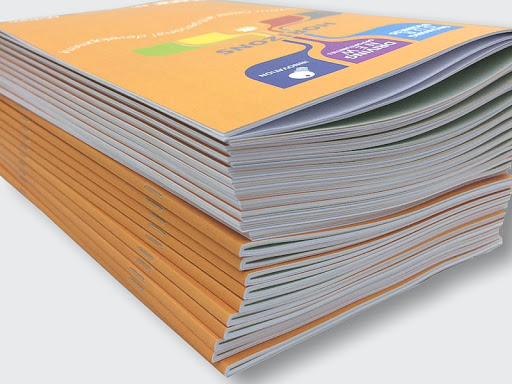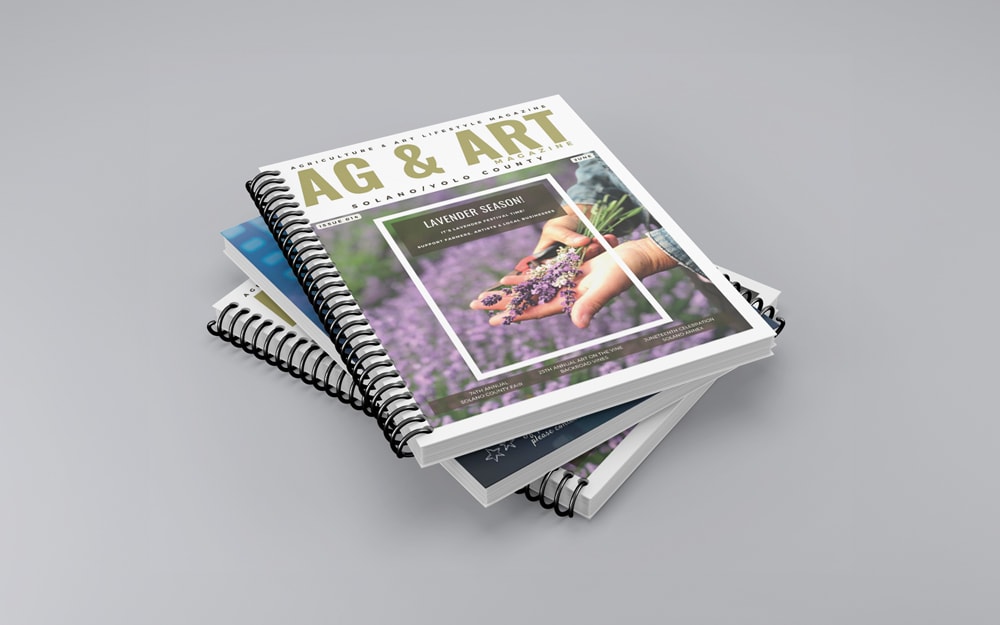A Step-by-Step Guide to Planning a Custom Booklet Printing Campaign
The Crucial Overview to Understanding Brochure Printing Options and Techniques
The process of booklet printing entails several considerations that can greatly impact the last item. From selecting the appropriate style and dimension to understanding the subtleties of binding approaches, each option plays an important duty. In addition, aspects such as paper stock and printing techniques additional affect the effectiveness of the brochure. As one navigates these alternatives, it becomes important to grasp just how they interconnect and what that suggests for the overall end result.
Comprehending Pamphlet Dimensions and layouts
When thinking about booklet printing, recognizing the different formats and sizes readily available is necessary for achieving the wanted presentation. Booklets can be generated in various layouts, including saddle-stitched, spiral-bound, and perfect-bound, each offering unique advantages. Typical sizes vary from basic letter (8.5 x 11 inches) to smaller sized options like A5 (5.8 x 8.3 inches), permitting adaptability based on material and target audience.Selecting the ideal size can influence both the layout and viewers engagement. Larger dimensions might match visually driven material, while smaller sized formats may be a lot more straightforward and mobile. Additionally, the number of web pages impacts the selection of binding approach, as thicker booklets may call for sturdier bindings. Eventually, recognizing these aspects allows for a much more tailored method, making sure that the last item aligns with the desired message and aesthetic, improving the general efficiency of the interaction.
Picking the Right Paper Supply

Binding Methods: Choices and Factors To Consider
When it concerns binding methods for brochures, numerous alternatives are available, each with unique benefits. Saddle stitch binding offers an economical remedy for thinner booklets, while excellent binding strategies give an even more sleek search for thicker publications. Wire-O binding stands out for its durability and simplicity of use, making it optimal for records that call for flexibility.
Saddle Stitch Binding
Saddle stitch binding provides a useful and economical solution for setting up brochures, making it a prominent option among publishers and services. This binding approach includes folding sheets of paper in half and stapling them along the fold line, producing a cool and well organized appearance. Usually appropriate for pamphlets with a reduced page count, saddle stitching is ideal for publications, brochures, and training materials. The simplicity of this strategy permits for fast manufacturing and is typically favored for short runs or advertising products. It is crucial to keep in mind that saddle stitch binding may not be suitable for thicker pamphlets, as the spinal column might not hold up under raised weight. On the whole, it stays a reputable option for several printing jobs.
Perfect Binding Methods
Perfect binding is a widely made use of method that provides a professional and polished coating to publications and pamphlets. This approach includes gluing the web pages together at the back using a solid adhesive, enabling a tidy edge and the capability to hold a bigger number of web pages contrasted to saddle stitching. Perfect binding is specifically suitable for thicker brochures, such as catalogs and annual records, where a strong, level spinal column is wanted. In addition, it provides the choice for a printed cover that can be made to enhance aesthetic charm. Nevertheless, factors to consider such as page count, paper weight, and the planned use the pamphlet should be thought about, as they can influence resilience and total high quality.
Wire-O Binding Options
Wire-O binding, understood for its longevity and flexibility, offers an outstanding choice for booklets that require very easy web page transforming and a specialist look. This binding technique uses a collection of steel loopholes that hold web pages safely, enabling them to exist level when open. It is specifically ideal for directories, manuals, and presentations due to its robust nature. Wire-O binding is readily available in numerous shades and sizes, accommodating various page matters and densities. Furthermore, it permits the inclusion of covers and tabs, boosting the pamphlet's general aesthetic. Considerations for Wire-O binding consist of the option of cable color, the dimension of the loops, and the extent of customization preferred, all of which can profoundly affect the end product's appearance and performance.
Digital vs. Offset Printing: Which Is Best for You?
When choosing a printing method for pamphlets, comprehending the differences in between digital and counter printing is essential. Digital printing makes use of contemporary technology to create top notch prints my site swiftly and economically, making why not try these out it ideal for brief runs or projects calling for quick turn-around times. It enables for customization, giving the capability to publish on-demand with minimal waste.In comparison, balance out printing is a typical technique that masters generating big quantities with regular quality. It includes moving ink from a plate to a rubber blanket, after that to the paper, which leads to vivid colors and exact details. Offset printing typically needs longer configuration times and is extra cost-effective for larger volumes.Ultimately, the choice in between electronic and counter printing depends on project requirements, budget plan, and desired quantity. For little, time-sensitive tasks, electronic might be the most effective option, while countered might be preferable for larger, top notch productions.

Designing Your Brochure: Tips and Finest Practices
When creating a pamphlet, cautious interest to layout, font option, and color use can significantly enhance its effectiveness. A well-structured format overviews the visitor's eye, while appropriate fonts assure readability and share the preferred tone. Additionally, effective usage of color can evoke feelings and emphasize essential details, making the total layout extra impactful.
Selecting the Right Layout
Just how can one successfully choose the right format for a pamphlet? It is vital to evaluate the pamphlet's purpose and target audience. A clean, organized format improves readability and engagement. Making use of a grid system can aid in lining up components continually, producing a specialist appearance. In addition, integrating visual hierarchy with differing sizes and positionings of images and text can lead the visitor's eye and stress essential details. It is also crucial to leave adequate white space, which stops overcrowding and enables for far better focus. Evaluating various formats through mock-ups can offer insight into just how the layout performs in real-world scenarios, making sure that the last item satisfies both aesthetic and practical needs. Useful Choosing Ideal Fonts
A well-chosen font can significantly improve the general layout of a booklet, matching the design and enhancing the web content's message. The choice of font styles should take into consideration readability, specifically for body message, as it assures the info is available to all viewers. Sans-serif fonts are frequently chosen for digital layouts, while serif font styles can provide a standard feel in printed materials. It's advisable to limit font choices to 2 or 3 to preserve visual coherence. In addition, typeface dimension plays a crucial role; headings should be not frustrating however distinct, while body message must be comfortable for reading. When selecting typefaces, placement with the brochure's theme and target market is necessary for reliable communication and aesthetic allure.
Efficient Use of Color
Color works as a powerful device in booklet style, leading and forming perceptions viewers emotions. It can stimulate feelings of calmness, count on, or exhilaration, depending on the colors selected. Designers must consider color theory concepts, making certain that the chosen combination straightens with the booklet's message and target audience. For instance, making use of cozy colors like red and orange can create seriousness, while cooler tones like blue and environment-friendly foster tranquility.Additionally, comparison plays a vital function; corresponding shades can improve readability and visual allure. Consistency in color usage across pages additionally reinforces brand name identity and communication. Inevitably, reliable shade execution not just records attention however likewise strengthens the brochure's function, making it a necessary facet of successful layout.
Completing Touches: Coatings and Unique Impacts
While numerous think about the content and format click reference of a brochure the most crucial elements, the finishing touches, such as finishings and special effects, play an important role in enhancing its total charm. Coatings can supply security and sturdiness, guaranteeing that the booklet withstands damage. Matte surfaces provide a sophisticated, non-reflective surface area, while shiny coverings can make colors show up more eye-catching and vivid. Special effects, like embossing or aluminum foil stamping, add a tactile measurement that can create a remarkable perception. These techniques can highlight details locations, accentuating crucial information or developing visual rate of interest. Additionally, UV coating can supply a high-shine finish that raises the overall look.Together, these completing touches not only enhance the pamphlet's aesthetic however also interact professionalism and reliability and focus to information, eventually leaving a lasting influence on the visitor.
Price Considerations for Pamphlet Printing
Recognizing the different price considerations for brochure printing is essential for organizations and services intending to optimize their budget plans. Trick factors influencing prices include the option of ink, binding, and paper approaches. Better products, such as exceptional paper or specialized inks, commonly increase the general cost. In addition, the dimension and web page count of the pamphlet play a significant function; larger brochures need more resources and time to produce.Another vital factor to consider is the printing technique, whether digital or offset, as each has its own pricing structure and suitability for different quantities. Companies must likewise consider design expenses, which can vary based on complexity and the use of expert services. Inevitably, delivery and handling costs can contribute to the total amount, specifically for huge orders. By reviewing these aspects, companies can make enlightened choices that line up with their monetary capabilities while achieving the desired top quality in their published materials.
Frequently Asked Concerns
What Are the Ecological Impacts of Booklet Printing?
The environmental influences of pamphlet printing consist of logging from paper production, carbon emissions from transportation, and waste generation from thrown out products - Booklet Printing. Sustainable methods, such as utilizing recycled paper and environmentally friendly inks, can reduce these effects
Just How Can I Make Sure Color Accuracy in My Brochure?
To ensure color precision in a brochure, one ought to utilize calibrated monitors, use expert color accounts, carry out test prints, and choose premium printing services that supply color matching and proofing options for ideal results.
What Is the Regular Turnaround Time for Brochure Printing?
The regular turnaround time for pamphlet printing varies depending on the intricacy and quantity - Booklet Printing. Generally, it varies from a few days to 2 weeks, influenced by variables such as publishing methods and ending up demands
Exist Minimum Order Quantities for Booklet Printing?

Can I Publish Pamphlets in Numerous Languages?
Printing booklets in several languages is possible. Lots of printing solutions use alternatives for multilingual or bilingual designs, enabling reliable interaction. Careful planning guarantees that develop components suit numerous languages without endangering readability or visual appeals. Furthermore, aspects such as paper stock and printing methods additional affect the efficiency of the brochure. When taking into consideration pamphlet printing, recognizing the different styles and dimensions offered is necessary for accomplishing the preferred presentation. When selecting a printing method for brochures, comprehending the differences between electronic and counter printing is crucial. In addition, the dimension and web page count of the booklet play a significant duty; bigger brochures require more sources and time to produce.Another vital consideration is the printing method, whether digital or offset, as each has its very own rates structure and suitability for various quantities. The environmental influences of brochure printing consist of logging from paper production, carbon emissions from transport, and waste generation from disposed of materials.